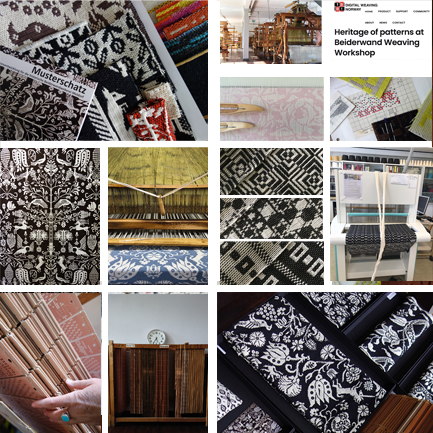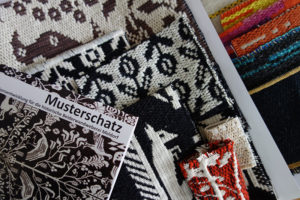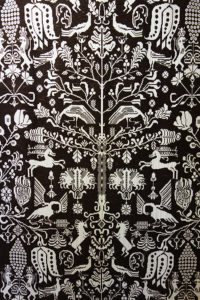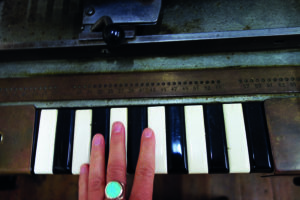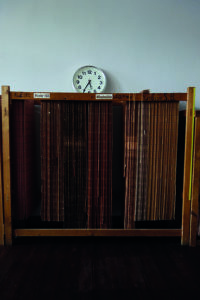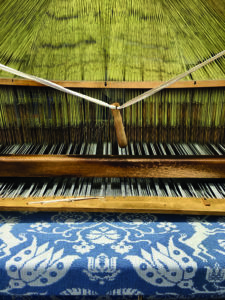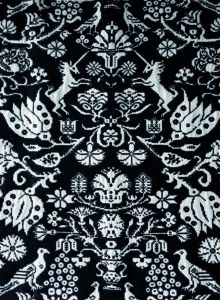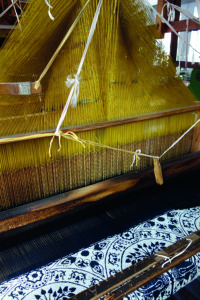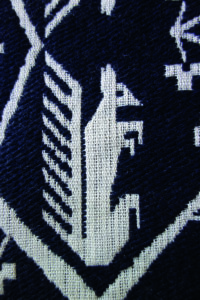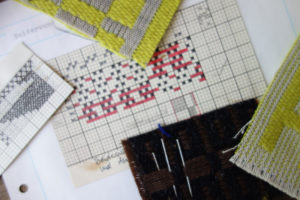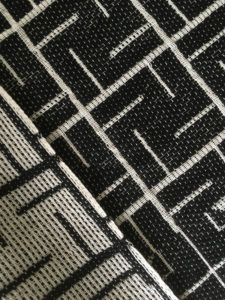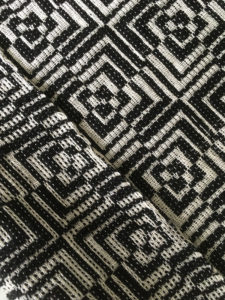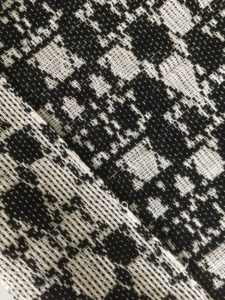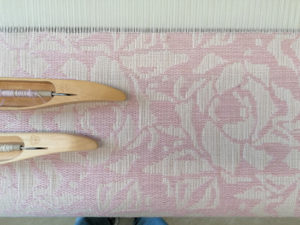Digital Weaving Norway berichtet über Kooperationsprojekt mit der Stiftung Mensch
Die norwegische Textiltechnologie-Firma „Digital Weaving Norway“, deren digitalen Jacquard-Webstuhl TC2 die Studierenden des Textilen Gestaltens nutzen, berichtet in seinem neuesten internationalen Newsletter über das aktuelle Beiderwand-Projekt:
„German textile designer and weaver Lucia Schwalenberg was recently a part of the Beiderwand-Weaving Workshop where the participants explored the historic weave pattern. The workshop took place at the ‚Stiftung Mensch‘ (Foundation Man), which is located in the authentic building-complex ‚Altes Pastorat‘ in Meldorf, Schleswig-Holstein (Germany).
Lucia Schwalenberg, who was the project coordinator for this Workshop, has already headed similar projects at the Tuchmacher Museum Bramsche (Fabric Maker Museum in Bramsche) and at the Textile department at the University of Osnabrück. Below, she shares details about the Workshop …
The Meldorf Beiderwand-Weaving Workshop is a cultural landmark which was founded 100 years ago as a part of „Dithmarscher Landesmuseum“. Part of the Workshop heritage is their large number of jacquard patterns stored on punched cards, as well as their historic mechanical jacquard looms, their ancien weaving accessories and tools as well as an archive of drawings and woven samples. The workshop is operated by people with disabilities.
The foundation ‚Stiftung Mensch‘ has made a complete inventory of their patterns, and relaunched the collection in order to prexerve the cultural treasure. They made technical descriptions and also carried out a systematical re-structuring of the workshop. The aim was to highlight the very special Beiderwand-patterns of the region
The pieces in the Beiderwand-collection of the Meldorf Museum Workshop have interesting names, such as Small and Big Tree of Life, Bernward, Phyramus and Thysbe, Bent Tulip, Small Tulip, Big Tulip, Unicorn, Hertzhorn, Bird pattern, Fishing Harbour, Small Sailing Boats, Gaushorn, Gotland, Deer, The Four Continents, Madonna and Jutland.
There are precious Beiderwand pieces originating from Meldorf in the following collections: The German National Museum in Nürnberg, the Schleswig-Holstein County Museum an Schloß Gottorf as well as in the Museums in Flensburg and Hamburg. In the 17th and 18th century Beiderwand-weavings became very popular, especially in Schleswig-Holstein, which is located in the nortern part of Germany/southern part of mainland Denmark/Jutland.
The patterns originate from 13th and 14th century damask patterns. Beiderwand-weavings were especially popular in farmhouse living rooms, where they were used as curtains as well as bed-covers on ‚built-in’beds, the so-called ‚Alcoves‘. Typical materials in Beiderwand weavings is a linen yarn in the ground weft sytem an in both warp systems, ground warp and binding warp, and a coarse wool in the pattern weft. The weave structure is a type of double weave, with areas that are connected and areas that form pockets.
The warp ratio is mostly 4:1 between ground warp and binding warp. The fabric surfaces show a high-contrast positive-negative image. The name Beiderwand (=two sides) may refer to the two distinctly different fabric surfaces resulting from the double-weave structure and the two materials. In the Germanic linguistic region, the root word -wand exists in other German words such as Leinwand, which means plain weave/tabby and Gewand, which means garment/robe. The origin of weaving stems from braiding, such as in Gewunden, meaning entwined of braided, such as walls braided from willows.
The patterns are either geometric, which means that they can be woven on few to many shafts, or ornamental/figurative, which means that they have to be woven on multishaft damast looms of jacquard-looms.
After having registered the traditional patterns, part two of the project was dedicated to the cooperation with the Textile Department of University Osnabrück: Guided by their university teacher Lucia Schwalenberg, the students started to develop timeless geometric Beiderwand designs. They were either contrasting black-and-white or with bright colour shades. They were woven with organic, natural tweed-yarns from Ireland, reminding of the originally handspun and hand-dyed yarns used in the historic textiles.
These new designs are right now in the process of being woven on the TC2 loom at the Textiles Department in Osnabrück. A small selection on the students‘ patterns shall then be transferred to punched cards for the jacquard looms at the Beiderwand-Workshop Meldof, so that the Workshop my add contemporary designs to their historic pattern treasure.
The transfer of files to jacquard hard cards became possible because oof the fortunate situation that workshop-leaderr Wolfgang Sternberg managed to retore both the card punching machine and the punched card sewing maching which were sitting in the Beiderwand-workshop Meldorf.
An exhibition with historic and contemporary Beiderwand-patterns is int he plannig for spring 2021 in teh Landesmuseum Dithmarschen in Meldorf. This unique project elegantly combines the great possibilities of the digital jacquard-loom TC2 and the historic, punched card jacquard technology preserved at Beiderwandweberei Meldorf.
About Lucia …
After studying Journalism (LMU München, Germany) and Textile Design (Hochschule Hannover, Germany), Lucia completed the Shuttle Course at Kunsthochschule Linz/Textiles Zentrum Haslach, Austria. She works as a textile designer and weaving lexturer at Kunsthochschule Kassel and University Osnabrück. In University Osnabrück she is a research staff member at the Textiles Department. She is currently working on her doctoral dissertation about ‚Genius loci – textile places of commemoration‘.
Hints to Beiderwand-sources are welcome to lucia.schwalenberg@uni-osnabrueck.de„
Text: Digital Weaving Norway/Geetika Nautiyal
https://www.digitalweaving.no/heritage-of-patterns-beiderwand-weaving-workshop/
Fotos: Lucia Schwalenberg

